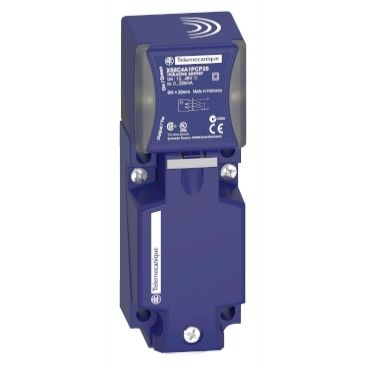Block
A block inductive proximity sensor, also known as a rectangular or block-style inductive sensor, is a type of sensor used in industrial automation to detect the presence or absence of metallic objects without physical contact. Here are some key features of a block inductive proximity sensor:
- Rectangular or Block Shape: Unlike cylindrical sensors, block inductive proximity sensors have a rectangular or block-shaped housing. This shape may offer advantages in certain mounting configurations or applications where space is constrained.
- Inductive Sensing Principle: Block inductive proximity sensors operate based on the principle of electromagnetic induction. They generate an electromagnetic field around the sensor's active face. When a metallic object enters this field, it disturbs the field, causing changes in impedance. The sensor detects these changes and triggers a response, indicating the presence of the object.
- Detection Range: The detection range of block inductive proximity sensors varies depending on the specific model and manufacturer. It typically ranges from a few millimeters to several centimeters.
- Non-Contact Detection: Like other inductive proximity sensors, block sensors can detect metallic objects without physical contact. This makes them suitable for applications where contact-based sensors may not be appropriate or may introduce wear and tear.
- Simple Operation: Block inductive proximity sensors are relatively easy to install and operate. They require minimal setup and calibration, making them suitable for use in a wide range of industrial applications.
- Output Options: These sensors typically provide digital output signals, such as NPN or PNP transistor outputs, or voltage-free relay contacts. The output signal changes state when an object is detected within the sensor's detection range.
- Rugged Construction: Block inductive proximity sensors are designed to withstand harsh industrial environments. They are often constructed from durable materials and feature sealed housings to protect internal components from dust, moisture, and mechanical damage.
- Applications: Block inductive proximity sensors are commonly used in applications such as machine automation, conveyor systems, material handling equipment, and robotics, where reliable detection of metallic objects is required for control and monitoring purposes.
Overall, block inductive proximity sensors offer a reliable and cost-effective solution for non-contact detection of metallic objects in industrial automation and control systems, with the additional advantage of their block shape for specific mounting configurations or spatial constraints.


